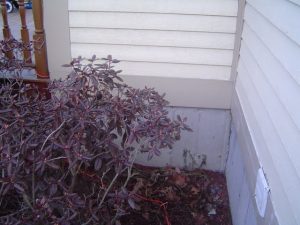Advantages and Disadvantages of Insulating Exterior Basement Walls
By Mark J. Donovan
|
|
There are a number of advantages of insulating exterior foundation walls.
However, there are also some disadvantages as well. It is much more cost effective to install rigid foam insulation up against exterior foundation walls while the home is being built, and more specifically, before backfilling around the foundation. Insulating exterior basement walls on an existing home, on the other hand, can be quite expensive, particularly if there are no plans to install a perimeter drain around the foundation walls in the process. |
Advantages of Insulating Exterior Foundation Walls
One of the principle benefits of insulating exterior foundation walls is that it reduces heat loss through the foundation walls, and therefore reduces home energy costs.
This is a particularly important benefit in colder climates where there is deep frost. In addition, in colder climates the exterior foundation wall insulation can actually help to protect the basement walls from cracking due to extreme freeze-thaw cycles.
Another benefit of insulating exterior basement walls is that it helps to protect the waterproofing coating that is applied to the exterior foundation walls when the foundation is backfilled. In addition, it helps to mitigate moisture penetration through the foundation walls.
Insulated exterior basement walls also help to reduce condensation on interior basement walls, as well as reduce the thickness of insulation required on interior basement walls.
| Disadvantages of Insulating Exterior Foundation Walls
Insulating exterior foundation walls does have a few disadvantages. Again, as I already mentioned, installing exterior foundation wall insulation as a retrofit project is expensive. In addition, insect infestation and water damage can be a problem with some types of exterior foundation wall insulation products. |
 |
For best results when insulating exterior foundation walls use 2” waterproof, insect resistant, rigid foam board insulation panels. In addition, it is important to make sure the panels are attached flush to the basement walls and that adjacent panels are butted up tightly against one another.
| In addition, all panel seams should be sealed and flashed properly to prevent water penetration in between panel seems.
If you live in an area with known Radon gas problems, insulating exterior foundation walls can exacerbate the buildup of Radon gas in the basement. Consequently, it is important to test your basement for Radon gas and install a Radon gas mitigation system if necessary. Finally, moisture levels in basements are typically quite high and can become even higher in a well insulated basement. |

Get this room addition checklist and save time and money on your room addition construction project. |
High moisture levels in the basement can lead to mold and mildew growth. Consequently, it is important to include a moisture control system, such as a dehumidifier, in the basement to mitigate the risk of moisture problems.
For help on building a home addition, see HomeAdditionPlus.com’s Home Addition Bid Sheets. Our Home Addition Bid Sheets provide you with the knowledge and information on how to plan a home addition project, and what to look for when hiring contractors. They also include detailed cost breakdown tables and spreadsheets for estimating your own new home addition building costs.
Related Information
- Insulation Crawl Spaces
- Insulation R-Values for Residential Home Construction
- How to Insulate Concrete Basement Walls
Free Home Addition Price Quotes with No Obligation!
Fill out our 3-5 minute quick and easy form, and receive a free price quote on a house addition from one of our prescreened and licensed home addition contractors. This process is free and there is no obligation to continue once you receive your house addition price estimate.
